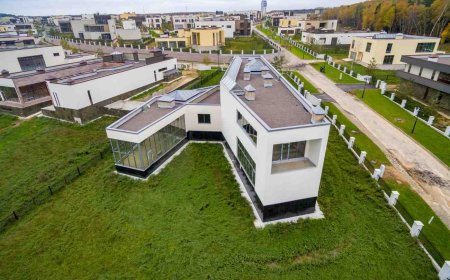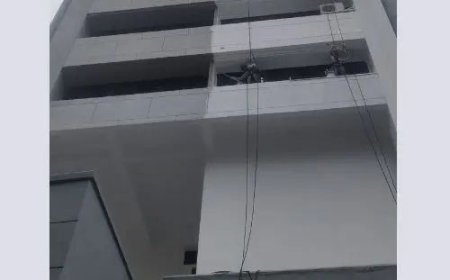Essential Tips for Designing Durable Industrial Warehouses
Learn essential tips for designing durable and efficient industrial warehouses in Pakistan. This guide covers site selection, robust structural design, the role of expert engineering, optimizing space, sustainability, and crucial maintenance for long-lasting facilities.

Thinking about putting up a new industrial warehouse? Or maybe upgrading an existing one? Well, its a big project, no doubt. Getting it right from the very start can save you a whole lot of trouble, time, and money down the line. When we talk about building spaces for storage and business operations, really grasping the core ideas behind durable and efficient warehouse construction is just, well, incredibly important. This article is here to give you some practical advice, making sure your new facility is not just strong but also works perfectly for your needs, year after year.
Picking the Right Spot and Getting the Ground Ready
The success of any building project, especially a large warehouse, truly hinges on where you decide to build and how you prepare the land. Before even considering the first brick, you've got to think about a few crucial things: Is it easy for trucks and vehicles to get in and out? Are essential services like water, electricity, and sewage readily available? Does the land have any history of flooding? Whats the soil like underneath? Getting a detailed geotechnical survey is absolutely critical. It tells you exactly how much weight the ground can support and highlights any potential issues that might need special foundation designs. Also, proper site grading and drainage planning are key to prevent water from collecting. Water buildup can really compromise a building's strength over time, leading to expensive repairs. Remember, a solid foundation isn't just about the concrete itself; it begins with the ground it's built upon.
Designing for Strength and Practical Use
Once your site is all prepped, its time for the design phase. This isn't just about looks; it's about creating a space thats tough, practical, and perfectly tuned for your specific business activities. Consider the items youll be storing are they sensitive to temperature? Do you need specialized equipment to move them? These considerations will influence choices about insulation, ventilation, and the layout of aisles and shelving. The materials you choose for construction are vital for durability. Steel structures are quite popular for warehouses due to their strength, flexibility, and relatively quick installation time. And for the floors, reinforced concrete is a must for handling heavy loads and constant movement. Think long-term here: investing in high-quality, durable materials upfront will ultimately lead to lower maintenance costs and a much longer lifespan for your building.
Ensuring the Structure is Sound: The Value of Expert Engineering
The structural integrity of any warehouse is paramount for both safety and longevity. This is exactly where the expertise of experienced engineers becomes truly invaluable. Theyll ensure that your design follows all local building codes and regulations, taking into account factors like seismic activity, wind loads, and even snow loads, if applicable. Precise calculations for beam sizes, column placements, and roof trusses are critical to prevent any structural failures. For instance, Shelters Engineering has a solid reputation for their meticulous approach to large-scale industrial projects. They focus on robust structural designs that are built to withstand the test of time and various environmental conditions. Their work often highlights how detailed planning and strict adherence to engineering best practices result in exceptionally durable facilities. You can get more information about their services by visiting: https://sheltersengineering.com/
to see how they approach complex building challenges.
Making the Most of Your Space: Efficiency in Layout and Technology
A durable warehouse is great, but an efficient one is even better. Maximizing your space is absolutely key. This means strategic placement of loading docks, well-planned storage layouts, and intelligent use of vertical space. For example, high-bay racking systems can significantly increase your storage capacity without needing to expand the buildings physical footprint. The flow of goods from when they arrive, to storage, to when they're dispatched should be seamless and logical. This helps minimize bottlenecks and boosts operational speed. Think about how forklifts will move, where people will walk, and ensuring clear signage throughout. Furthermore, integrating modern technology can significantly enhance efficiency. This might include automated guided vehicles (AGVs), advanced inventory management systems, or even energy-efficient lighting and HVAC systems. Planning for these integrations during the initial design phase is far more cost-effective than trying to add them later.
Building Green: Energy Efficiency and Sustainability
In today's world, constructing a building with an eye on energy efficiency and sustainability isn't just good for the environment; its also beneficial for your operational costs. Large warehouses consume considerable energy for lighting, heating, and cooling. Incorporating natural light through skylights and strategically placed windows can reduce reliance on artificial lighting. High-performance insulation, reflective roofing materials, and energy-efficient HVAC systems can considerably lower your utility bills. You might even consider renewable energy sources like solar panels, which can offset a significant portion of your energy consumption. Sustainable construction practices, such as using recycled materials or minimizing construction waste, also contribute to a greener footprint and can enhance your company's public image.
Regular Upkeep: The Secret to a Long Life
Even the most well-built warehouse requires consistent attention to stay in optimal condition. Regular maintenance isn't just an option; it's a vital part of ensuring the facilitys durability and efficiency throughout its lifespan. This involves routine inspections of the roof for any leaks, checking the integrity of walls and foundations for cracks, maintaining drainage systems, and servicing HVAC and electrical systems. Addressing minor issues quickly can prevent them from escalating into major, costly repairs. A proactive maintenance schedule will extend the life of your warehouse, protect your investment, and ensure a safe working environment for everyone.
For more detailed information on various aspects of warehouse construction, you can visit: https://sheltersengineering.com/warehouse-construction-company-pakistan/
to explore further resources and see project examples.
Conclusion
So, building a durable and efficient industrial warehouse is a big undertaking, but it's also incredibly rewarding. It really calls for careful planning, making smart decisions, and often, getting expert help from experienced professionals. By focusing on critical elements like proper site preparation, a strong design, expert engineering, and a commitment to ongoing maintenance, you can ensure your new facility stands strong for many decades to come. Remember, a well-built warehouse is more than just a structure; it's a strategic asset that underpins the success and growth of your business, providing a secure and productive environment for your goods and workforce. Ultimately, thoughtful warehouse construction is a true investment in your companys future.
































